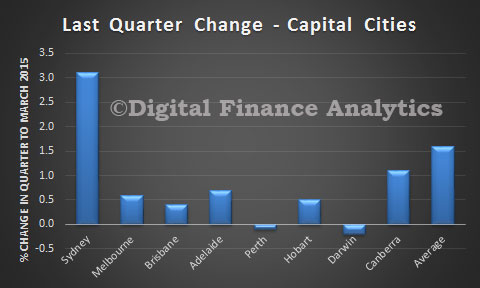From The Conversation. In recent weeks, there have been signs sentiment may be changing around the contentious policy of negative gearing.
There are well-rehearsed arguments on both sides. Critics argue that the deduction of property losses from other sources of income (such as wages) is a tax shelter that imposes an unfair burden on other taxpayers. Defenders of the policy suggest that it is used by prudent savers to “get ahead”, and by high income individuals to lower unduly high tax burdens that blunt work incentives.
However, these arguments are tax policy concerns since taxpayers can negatively gear other financial investments such as shares. There are housing policy specific issues that instead warrant a focus on housing; three deserve particular attention.

The first is a familiar refrain. Given a fixed supply of land, negative gearing advantages property investors who are better able to out-bid other land users. Part of the tax break gets shifted into higher land and housing prices; some other users of land – first home buyers, for example – are “crowded-out”.
But a second reason, related to so-called tax “clientele effects” has been rarely mentioned. It is a more nuanced influence, yet it is important to an understanding of the supply side effects of reform in this area.
The Australian private rental housing stock is relatively large by international standards and mostly held by “mum and dad” investors. There are not enough high tax bracket investors willing and able to hold all the housing in this tenure. Lower tax bracket investors must be enticed into the market. These investors are often retirees looking for secure, regular flows of income, and are attracted to those segments of the market where rental yields are relatively high.
On the other hand, the appeal of property investment to the high tax bracket investor is that they can negatively gear the asset’s acquisition, yet an important part of the returns (capital gains) are lightly taxed compared to other types of investment income. The consequence is that high tax bracket investors crowd into segments of the market offering high capital growth but low rental yields. Low tax bracket investors concentrate in segments offering high rental yields but lower capital growth.
The removal of negative gearing is then likely to have supply side impacts that are not as straightforward as has been suggested in some of the media commentary. To be sure some high tax bracket investors will withdraw and as price pressures ease and rental markets tighten, rental yields will rise.
But those higher rental yields will prompt some growth in the number of low tax bracket investors, and especially so in today’s low interest rate environment. As low tax bracket investors face tighter borrowing constraints, the overall supply side impact will be negative. But it will not be the collapse in supply that some fear.
The third reason for change with respect to negative gearing and housing is perhaps the most important in the current context. The share of investment property loans in total debt has tripled from one-tenth to three-tenths in a little over two decades. Investors now take up a higher share of the value of new loans than do first home buyers.
According to the Australian Bureau of Statistics, investment housing accounted for 40% of the total value of housing finance commitments in April 2015. Of the dwellings that secured housing finance commitments within the owner occupation sector, only 15% was attributable to first home buyers. The presence of housing investors on such a large scale is a potential source of instability, especially if highly geared.
In their seminal research, the late Professor John Quigley and his colleague Karl Case note that when markets slump home owner behaviour differs from that of other investors.
They can “consume” the housing they have bought – by enjoying the surroundings and the comforts of home – and provided mortgage payments are met, they are invariably willing to “sit out” the slump. This can be an important source of stability in housing markets.
But property investors have not bought a dwelling to live in it. When prices slump some if not many will cut their losses and seek a safe haven for their capital elsewhere, especially if they are highly geared. Our research finds that negatively geared investors are more likely to terminate rental leases than equity-oriented investors. The former are also prone to churn in and out of rental investments as they refinance to preserve tax shelter benefits.
When large numbers of indebted investors come to bank on continued house price gains, and low interest rates, the resilience of housing markets is undermined. Phasing out negative gearing should be a priority for a housing policy fit for the 21st century.
Authors: Gavin Wood, Professor of Housing at RMIT University and Rachel Ong, Principal Research Fellow, Bankwest Curtin Economics Centre at Curtin University







